In the cultural maze of the southern Dutch city that is Eindhoven, there lies a really cool art platform called MU. On Friday evening 6 October their latest exhibition, Materialising the Internet opened. Cultural Eindhoven (including myself!) gathered to witness what curators Nadine Roestenburg and Angelique Spaninks have put together in an exhibition that focuses on how we use (the many possibilities of) the internet. The technology grows so fast that very often, we do not (yet) know how to handle this, which to them is why internet art is such an interesting form for so many people.
The exhibition builds on another one that took place in MU seven years ago in which the idea was explored of how reality and the virtual are intertwined. Technology and the internet, and thus internet art, have since then changed massively and MU saw the opportunity to revisit these ideas and to look back on how far we as an online society have come and how the current art reflects this.
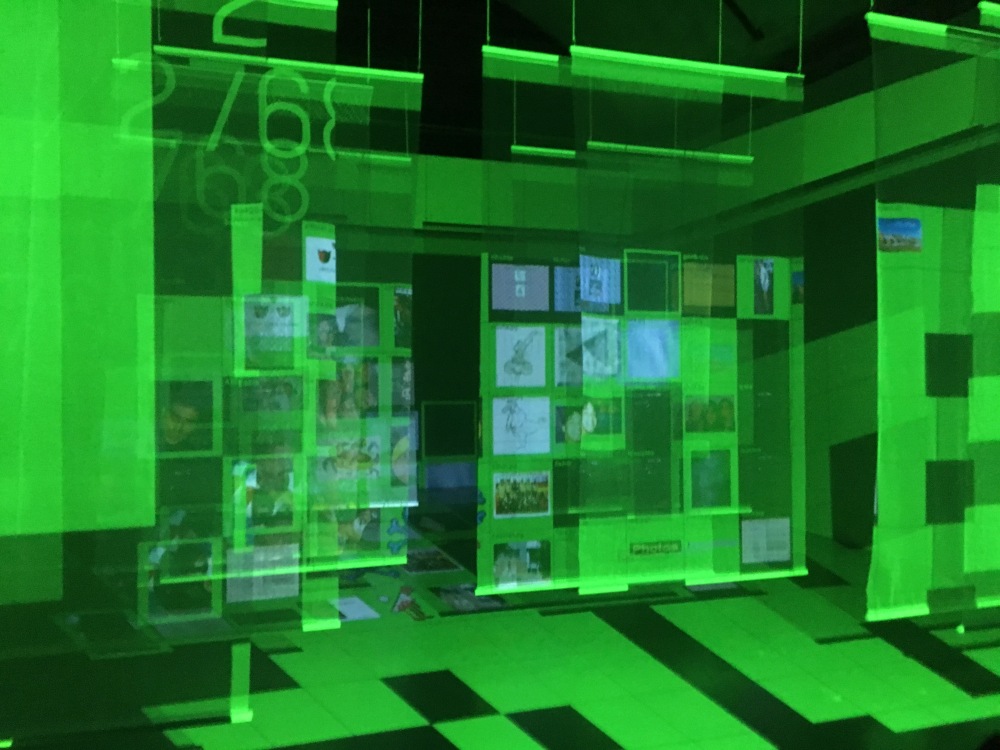
After its official opening, myself and a group of a dozen other interested attendants followed curator Angelique on a tour across several of the artworks in the exhibition. The first one we visited was the work shown above, ‘Deleted City 3.0’ (2017) by Richard Vijgen. The work projects old geospots, locations on the internet in its very early days, on see-through screens that give the installation the impression of a city. You can even walk through the screens and become extremely disillusioned when the projected geospots on the screens move. As the title implies, the work is an archaeological site on the internet of a time that once was but now has been ‘deleted’. The early citizens of the web often built sites about themselves or things close to them or their fields of expertise, which they found at Geocities, a free web-hosting provider that was modelled after a city where you could get a piece of land. This idea of the internet as a city where sites are buildings and topics and themes form neighbourhoods is clearly visible in the way that Vijgen assimilated his installation.
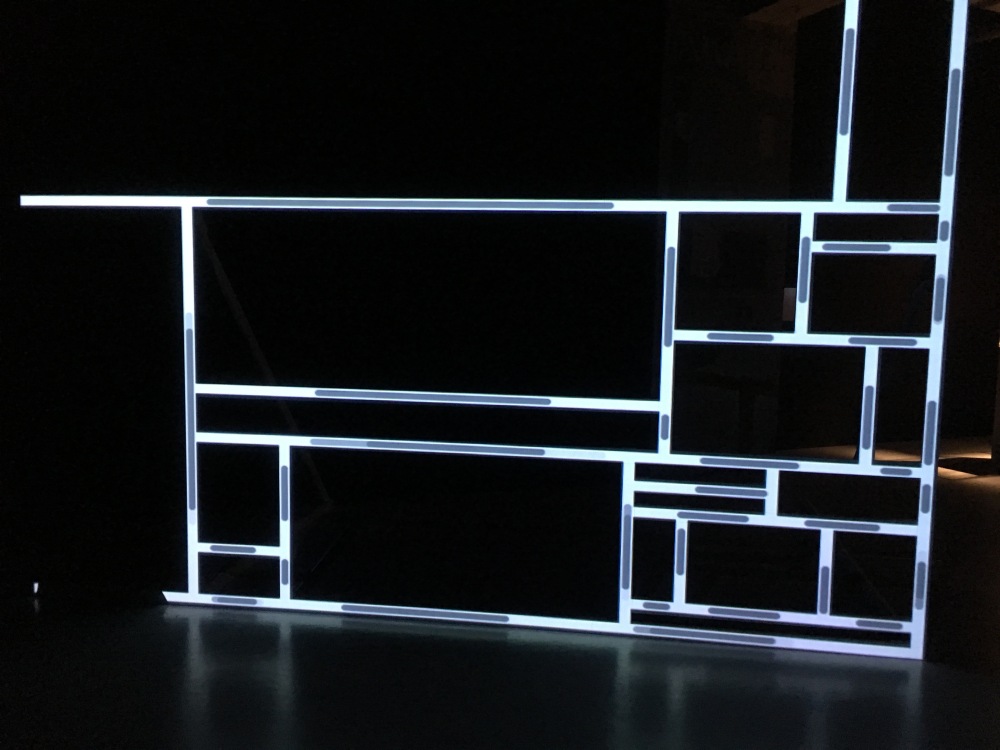
Jan Robert Leegte is an internet artist who started out in the late nineties, when internet was very different from our current online experiences. His work ‘Scrollbar Composition’ (2017) is the physical representation of the ‘Scrollbar Composition’ website that he created in 2000. When you visit the site, your browser is divided into blue and grey fields deliniated by scrollbars that move up and down, from left to right. They move autonomously, but you can also drag them yourself. This work is still online.
Leegte has been making art on the internet for years, but he was looking for ways to communicate to a more artistic public. He achieved this by making the switch to the art gallery space, where he could project his online work into the gallery. The work is reflecting how transformation continues and how things always change overtime. The sculpture is in permanent transformation and may even fall silent in the future.
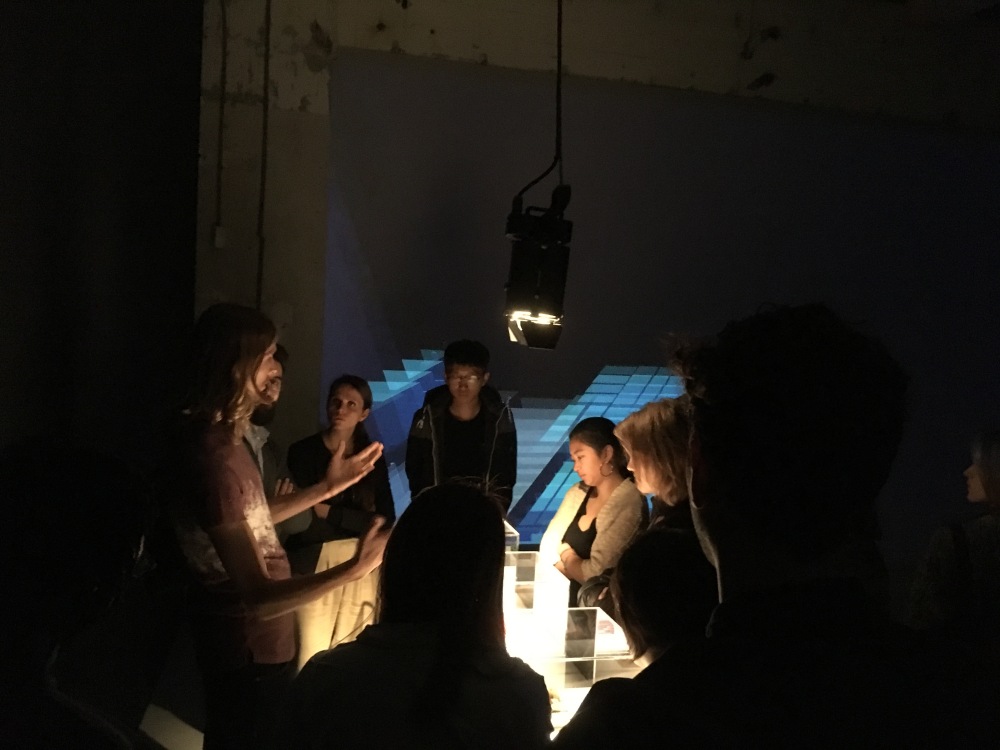
During the little tour, artist Jip the Beer talked about his work ‘Web Spaces’ (2016-2017) and how it came about. He became lost in the ever growing digital world of the internet and tried to form a new relation to this by translating the digital to the physical world. He did this via 3D printed objects that are small scale-models of buildings. The choices of these buildings might not immediately seem to be of any significance, but Jip chose the headquarters of three important sites that we visit online: Facebook, Youtube and Google. By showing these buildings, he reveals the architecture beneath the digital surface of the internet.
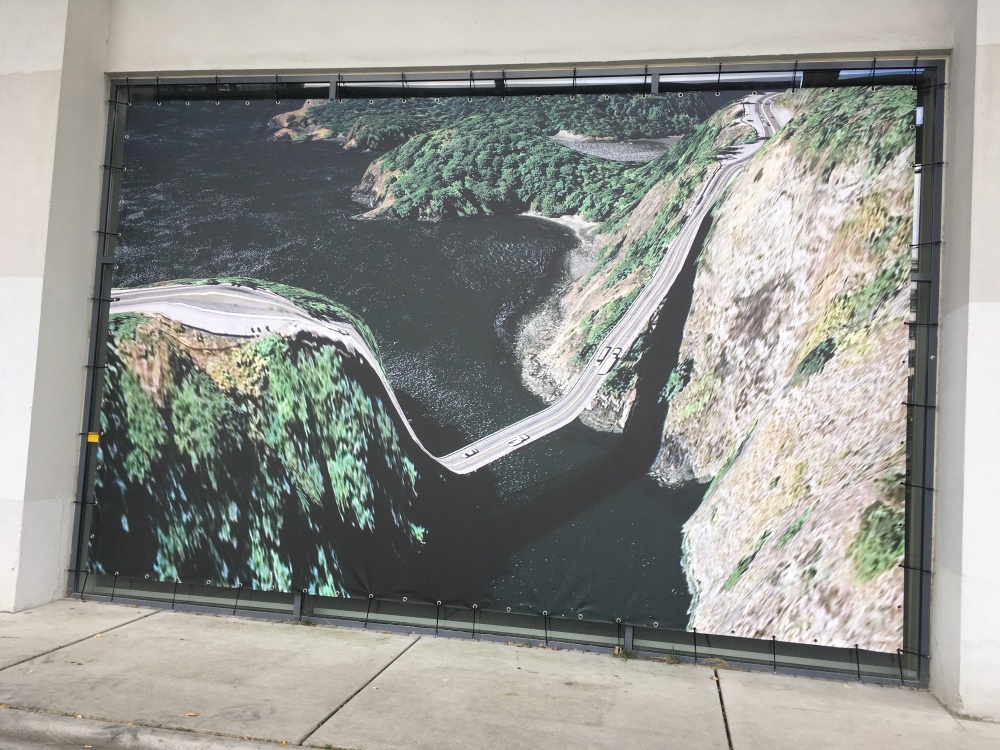
Outside of the exhibition hangs a giant poster of a warped image of a bridge. Inside the exhibition room, there is an accompanying video to Clement Valla’s work ‘Postcards from Google Earth’ (2010 – ongoing). The work is a collection of screenshots of bridges from Google Earth that seem to have melted to fit the shape of the surrounding earth. They are the result of the way Google Earth’s animation is created from various different sources: a 3D model that traces the surface of the earth and several aerial photographs merged into one ‘smooth’ image that capture the same surface in detail. Valla’s work, for instance in the ‘postcard’ shown on the poster above, shows the moments when the digital fails to make an accurate representation of reality and shapes an alternate reality between real and virtual.
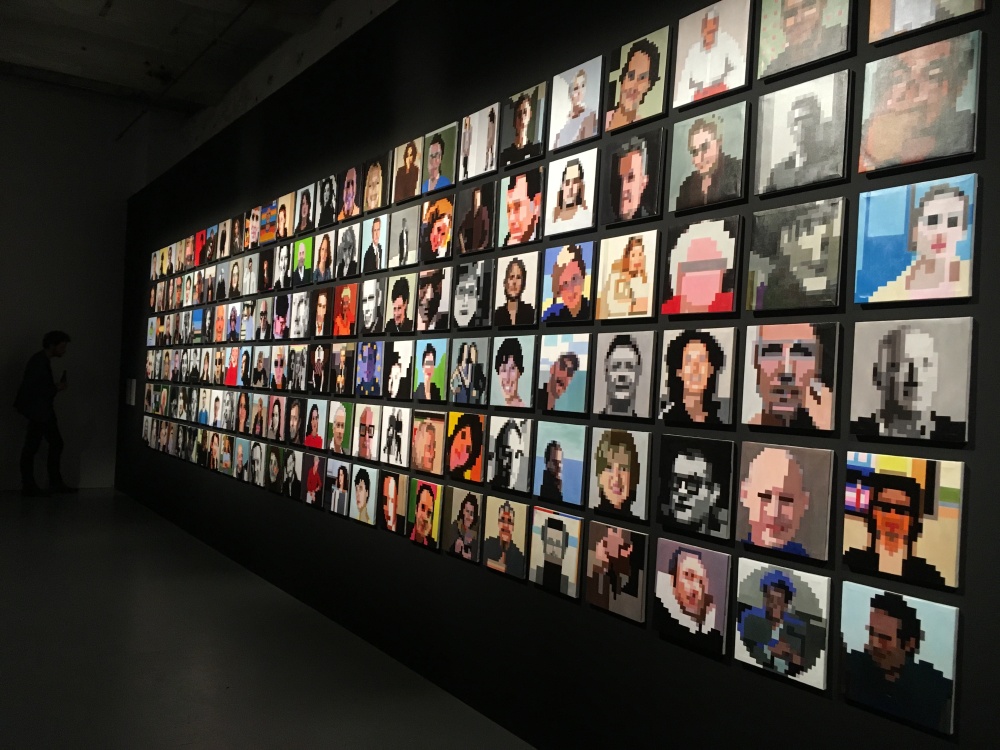
I would have loved to see the exhibition that took place seven years ago, but sadly enough I have to draw some conclusions from the current presentation only. Having grown up in the time when the internet was growing up as well, I have seen the enormous leaps the world wide web technology has made. The artworks in the exhibition perfectly manage to capture this exponential development. Vijgen’s Geocity shows how ‘archaeic’ the first days of the internet seem to be now, when the work ‘My Friends’ (2017) by Mieke Gerritzen question some very current problems the internet face today: that of privacy, connectivity and attachment to the real world and the people in it. In this work, she selected the 150 people from her 800+ Facebook friends list that were closest to her and painted their profile photos, but altering them so they become inreckognisable. The work is a perfect example of the tension between old, traditional ways of communicating and newer ways. This is both visible in how it is represented, through the ‘classic’ medium of painting versus the modern digital original sources from these pictures, as well as what is represented: ever since the invention of social media, our friends, family and everybody we know has become more easily accessible than ever before, but we also feel increasingly more disconnected to them because the online communication between people often replaces the real-life communication.
As this review is published, I have already visited the exhibition twice and even have a third visit planned. That says it all, doesn’t it? To me, good exhibitions are the ones that you can visit more than one time and still learn new things from it and become inspired. Materialising The Internet is a perfect example of an exhibition that lets you discover new things over and over again. The works on show are accessible, understandable and current so that every visitor can relate their own online experience to the many great artworks. A true must-visit for everybody that wants to reflect on their own digital behaviour and identity and compare this to tendencies in the current art scene as well.